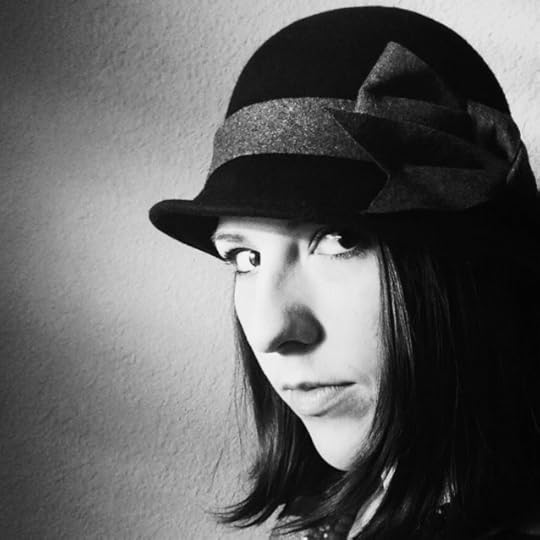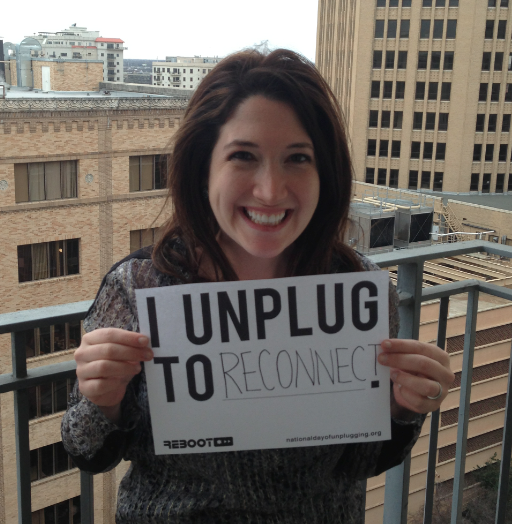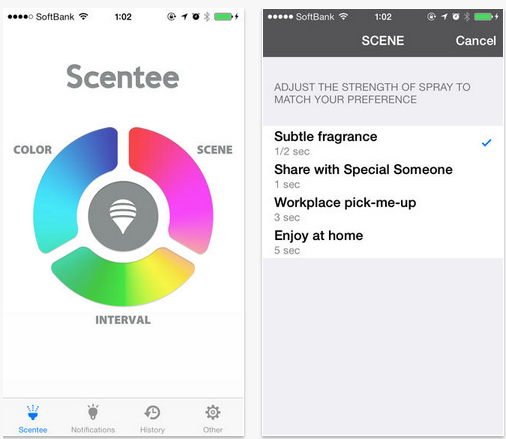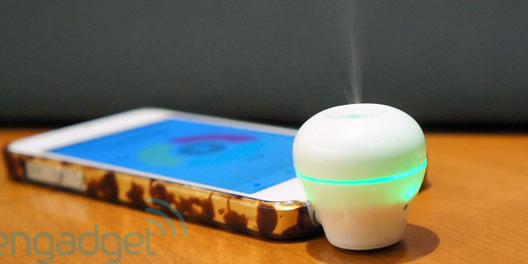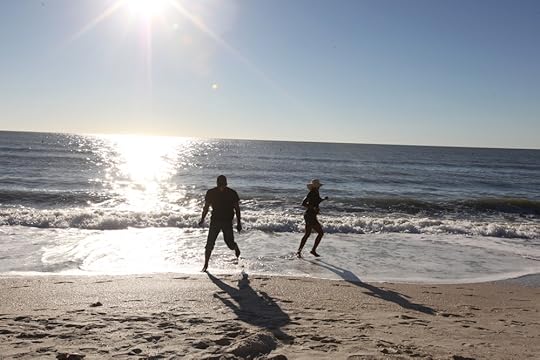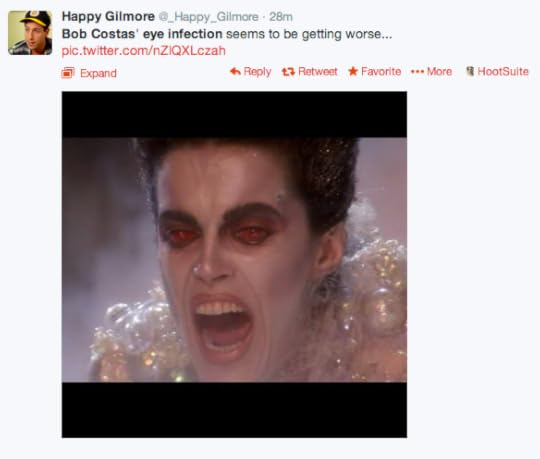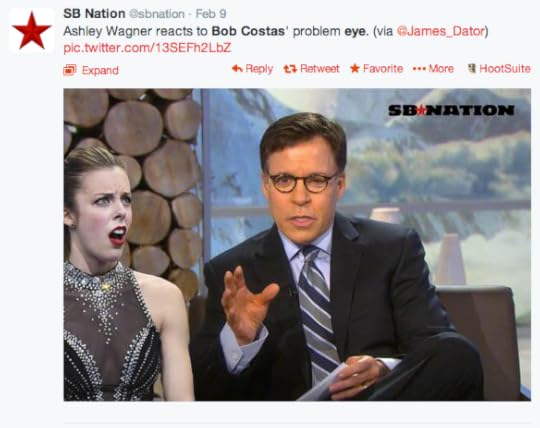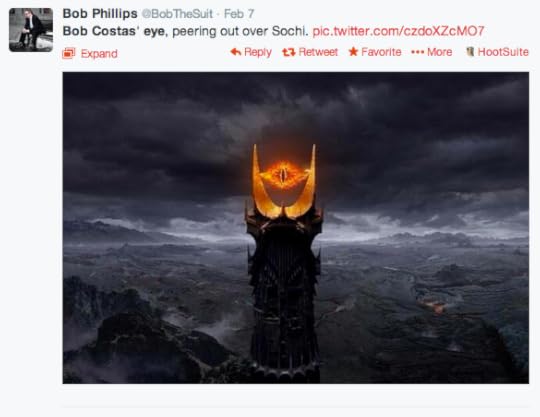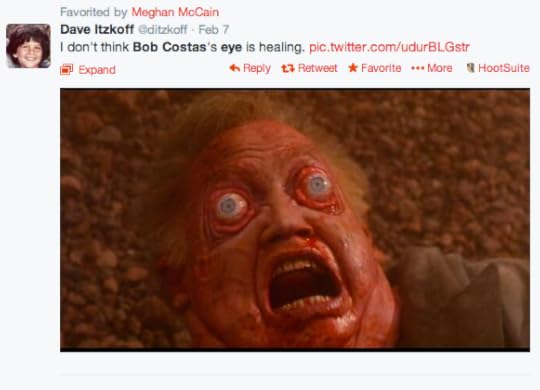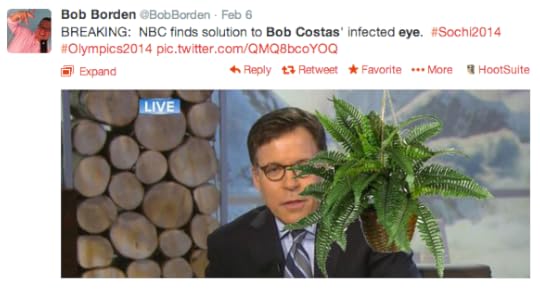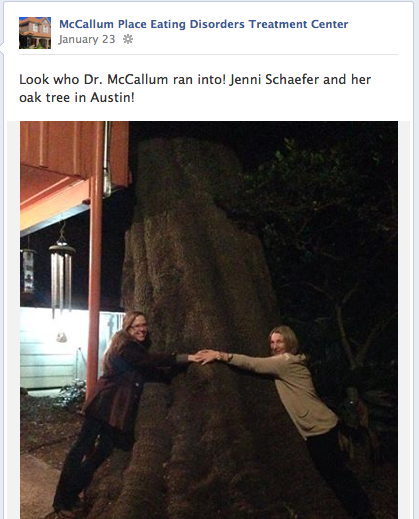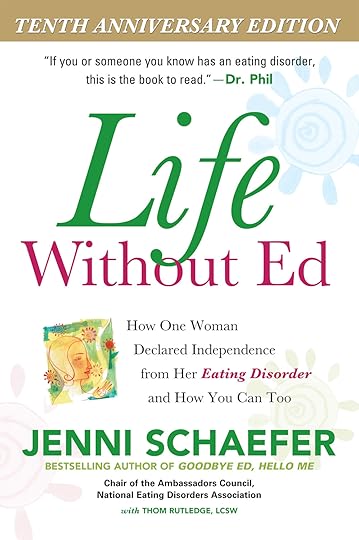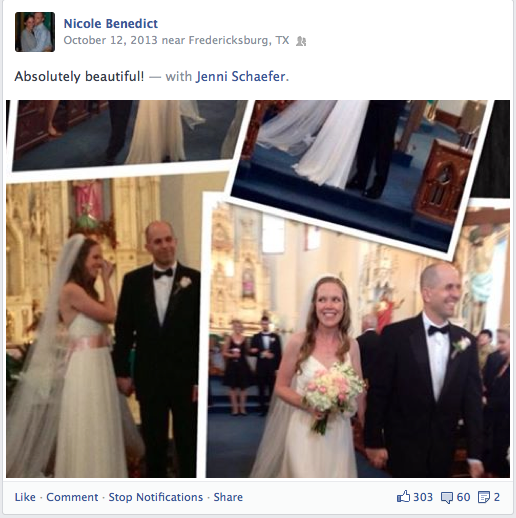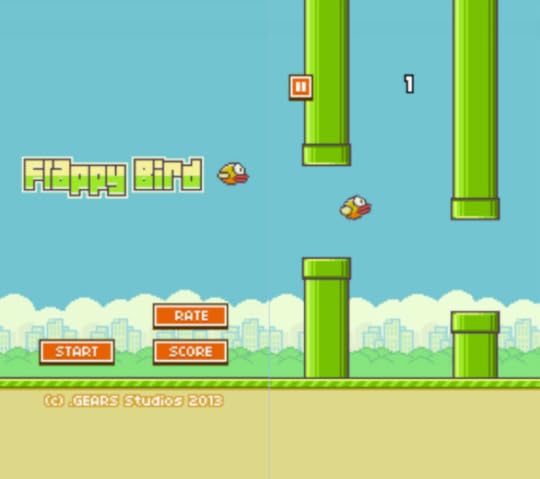Randi Zuckerberg's Blog, page 52
February 13, 2014
6 Last-Minute Valentine’s Day Gifts (No, It’s Not Flowers)
Perhaps you’re in a pinch. The florist may be out of roses. And the chocolates are picked over at the store. It is Valentine’s Day and if you’re still empty handed, you’re probably panicking to find a gift in a jiffy. Here to help you with all of your last-minuteness are a handful of non-gift and non-traditional Valentine’s Day gift ideas to spread some love.
1. Wish greatness upon someone you love.
Let your family members know your dreams and wishes for them. Express it in your own way in a note, or scrawl it on a balloon. Telling someone you’re on their cheering squad is a powerful way to say, “I love you” this Valentine’s Day.
2. Do something unsolicited.
Identify a need in your friend’s life, like cooking a meal or a free night of babysitting, and offer it with no strings attached. An act of generosity goes a long way in letting someone know you care.
3. Start a chain reaction by paying it forward.
Buy your coworker’s coffee or lunch, and then when they say “Thank you” or offer to get yours next time, just ask them to pay it forward to someone else.
4. Give a ‘get out of jail free’ card.
Make your own or just grab one from your Monopoly board game. Explain to your friend that they can redeem it when they find themselves in a bind. After all, friendships are the net beneath us, catching us when we stumble.
5. Throwback.
Honor your history with your significant other by giving a small token or reminder of your past. Perhaps it could be something to symbolize where you met, your first date, or the day you got married. The object can be small, but the sentiment doesn’t.
6. Apologize.
For any relationship you have that may be a tad strained, face the music today. Pick up the phone and make amends with a friend or neighbor. Even someone in business who you thought was your opposition, may in fact become your best ally.
Happy Valentine’s Day to you and yours!
Posted on 2/13/2014
Meredith Mathews is Creative Director at Half Price Books, America’s largest family-owned new and used bookstore chain. Fourth generation SMU alum, she graduated from the Temerlin Advertising Institute. She is a copywriter, designer and strategist. Meredith’s favorite things in life are spending time with family, autumn breezes, snow-capped mountains, stringed instruments, hats, and baking. You can follow her on Twitter at @msquare21.



 by
by 
The post 6 Last-Minute Valentine’s Day Gifts (No, It’s Not Flowers) appeared first on Dot Complicated.
Free Custom Poems For Your Loved One
Today, until 8pm, PayPal is creating free custom poems for Valentine’s day. After checking out the site, you can chat with a poet or fill out a form sharing a few details about your loved one– and then they’ll send you a custom poem! It’s an easy, sweet way to show someone you care. You could even copy the poem into a V-Day card or print it instead of a card. Go check it out!

Randi’s custom poem
Posted on 2/13/2014



 by
by 
The post Free Custom Poems For Your Loved One appeared first on Dot Complicated.
I Unplug to Reconnect
In celebration of the fifth annual National Day of Unplugging (NDU) — from sundown Friday, March 7 to sundown, Saturday, March 8 — the nonprofit Reboot is asking individuals and families to reconnect with each other by putting down their smartphones, tablets and computers for 24 hours.
The topic of families unplugging is especially close to home for today’s NDU interviewee Randi Zuckerberg, who has joined Reboot’s National Day of Unplugging as an advocate for the annual digital detox.
Today, Randi shares how she unplugs and what it means to her family.
1. How did you get involved in unplugging?
When I had my son almost three years ago, I became much more conscious of how often I was using my devices in his presence. Though he was just a baby, I realized he could tell when I wasn’t giving him my full attention.
2. What do you do when you unplug?
Unplugging is my way of becoming present and truly connecting with the people around me. On the weekends, my husband and I take our son out to the park or to dinner “alone” by leaving our phones at home.
3. What is the most overrated piece of modern technology?
I think some of the most common apps on smartphones are replacing our dependance on our own memories — maps, notes, calendars and reminders, to name a few. I personally use these tools all the time, but I’m trying to step back and appreciate the power of my own memory once in a while!
4. Do you make unplugging a regular practice? If so, how?
In a world where people are expected to be reachable 24/7, it is really hard to make unplugging a regular practice. I used to feel so guilty when I took more than a day or two to answer emails when others were depending on my quick response. But since creating Dot Complicated, I have become much more proactive about creating unplugged moments throughout the week.
5. Any plans for the next NDU?
I’ll be at South by Southwest this year during the National Day of Unplugging. I’m looking forward to the opportunity to connect with people in person. Though you’ll see some of the most connected techies and social media influencers at SXSW, it’s great to see how they still value the power of personal, one-on-one interaction.
6. If you could unplug and spend time with one person for an hour, who would it be and what would you do?
I would unplug and spend that hour at the park with my son, Asher. He loves trains, and there’s this cute little park near our home where he would ride the choo-choo train all day long if he could. Or Beyoncé — but don’t tell Asher!
Join us and the NDU community in taking stock of our digital use. Share what you do when you are unplugged by snapping an “I UNPLUG TO ____” photo. Upload it to www.NationalDayofUnplugging.com or post it to Facebook or Twitter with #unplug.
This post originally appeared on Huffington Post.



 by
by 
The post I Unplug to Reconnect appeared first on Dot Complicated.
February 12, 2014
4 Apps To Rev Up Your Love Life
Randi appeared on KATIE this week talking about the best apps for Valentine’s Day. Here’s what they discussed:
Red Stamp (free) lets you design a beautiful, personal card for a loved one that you can choose to send over email for free or in the mail for a dollar or two. You can even add in your own photos. Saves you a trip to the drugstore for a card– it’s an easy, quick way to show someone you care.
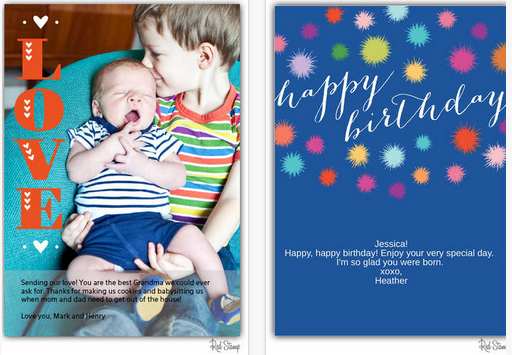 Re: Beat by Rebtel (free) lets you record your heartbeat to send to a loved one. By placing your fingertip on your phone’s camera, you can capture the beat and text away. Cute alternative to an ‘I Love You’ text message, if a little out-of-the-ordinary.
Re: Beat by Rebtel (free) lets you record your heartbeat to send to a loved one. By placing your fingertip on your phone’s camera, you can capture the beat and text away. Cute alternative to an ‘I Love You’ text message, if a little out-of-the-ordinary.
Lovestagram (free) connects with Instagram and creates a slideshow of all Instagram photos shared between you and your special someone, through mutual username tags, photos shot in the same location within an hour or comments exchanged. All you do is sign in through your Instagram account and enter the username of your significant other. A sweet way to see a slideshow of your relationship.
Scentee is an app and hardware add-on that releases a vapor of scent when you text the person you love. You buy them the scent cartridge (about $35) which attaches to their phone, and then can text them a scent throughout the day as a pick-me-up or hello. The cartridge lasts for about 100 scents.
Would you try any of these apps?
Posted on 2/12/2014



 by
by 
The post 4 Apps To Rev Up Your Love Life appeared first on Dot Complicated.
How I Coped With Being Duped Online
Before I launch into the details of this online dating disaster, I want to be clear: this is not a soppy story. Please put your Kleenex tissues away. This is instead a story of triumph; where a terrible dating experience turned into an experience that changed my life for the better.
I’ll start at the beginning. Two years ago, when I was 29, I felt the ‘Oh-my-god- I’m-almost-30-and-single-help-I-need-to-date-more’ panic. So I hit online dating sites.
I started chatting with a cute 36-year-old. His profile photo had an artsy flair and his description was witty and eloquent. Tick tick tick. We moved from online messaging to SMS, and quickly arranged a brunch date.
With his profile picture open on my iPhone, I searched inside and outside of the nominated restaurant but saw no sign of him. When I heard ‘Jordana’ I turned around to see a guy, who I didn’t recognize, in the corner of the outdoor courtyard. As my date stood up, it was obvious he got creative in multiple profile categories. You know, you’ve heard these lies before; he looked 10 years older than his profile photo, 15 kgs heavier, and an entire foot shorter than his promised height. Don’t get me wrong – personality trumps looks any day – but I have no time for dishonesty.
As I sat down, already questioning his integrity, we embarked on a date from hell. We had nothing in common, we somehow found ourselves arguing, and he was sweating because he was incredibly hungover. Charming. I couldn’t wait for it to end.
Finally free, I felt horrified. I was like ‘I’m going to be single and alone forever.’ In a state of shock I rang my best friend. Struggling to string a sentence together, the only way I could communicate the extent of the awkwardness and humiliation
I experienced was by relaying the broken back-and-forth conversation, imitating all of his hungover “uhhs” and “errrs” along the way. My friend was laughing so hard she had tears running down her cheeks.
So I called another friend. And told her the story too, with all “uhhs” and “errrs” included. By the end we were both laughing so hard we could barely breathe. I forgot about the anxiety and emptiness I felt as I left the restaurant; I was too busy hysterically laughing. And that’s when I realised ‘I need to do comedy because it’s therapeutic’. And to this day, it’s still therapeutic.
I’m totally and utterly addicted to social media and my iPhone, and I use comedy as a way to cope with my addiction. Life balance is something I’ve never been able to achieve. And tech-life balance seems… well, virtually impossible. So I cope with my social media addiction by making jokes about it. If I can talk about my obsession and dependency on stage – and use laughter to connect with audience members – it’s an incredibly healing experience.
Last year, I wrote a comedy show called Social Needia: The Epidemic – entirely dedicated to my social media and technology addiction, and my attempted online detox — which I debuted in the 2013 Melbourne International Comedy Festival.
This year I hit the 2014 festival with another social media-themed show titled Like Me, Love Me, Retweet Me, which explores the meaning of honesty online, and exactly why making myself look good on social media is a full-time job. Whether I’m delivering jokes about my desperate need to be Facebook LIKED, important social media Dos and DON’Ts, or the fact that I invest most of my offline time into creating and curating my perfect online self, if the crowd laughs, it’s proof I’m not the only one dealing with internet issues.
Social media is impacting everyone. We’re all trying to find ways to understand what it means and how best to integrate it, introduce it, or manage it, in our lives. I’m not sure I’ll ever achieve tech-life balance but I’m confident I’ll be able to cope with my ‘social needia’ as long as I keep writing and performing comedy because support, in the form of laughter, is the best therapy on offer.
So the next time you have a bad online dating experience don’t despair. You never know… It could turn out to be the best ‘worst experience’ of your life.
Posted on 2/12/2014
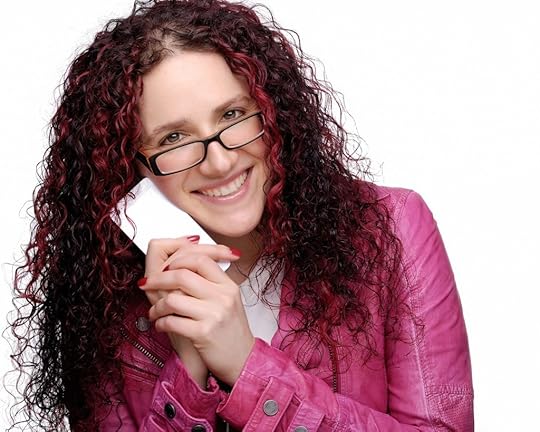 Written by Jordana Borensztajn
Written by Jordana Borensztajn
Jordana Borensztajn is a social media and iPhone addict, comedian, journalist and social media trainer. She drinks a lot of coffee, loves hanging out in Apple stores, and will never, ever count the hours she spends each week on social media. It would be way too terrifying. Tweet her any time at @JordanaOZ or connect with her on Facebook.



 by
by 
The post How I Coped With Being Duped Online appeared first on Dot Complicated.
February 11, 2014
We’re Never Bored Anymore. And That Could Be A Problem.
After 6 months in Bali without a smartphone, I have acquired an iPhone 4. Mine was stolen from a nightclub in July and I never replaced it. The reason I resisted for so long was to avoid a very clear and tangible impediment to being fully present. (Coincidentally my iPhone was plucked the night after I got out of a silent -Vipassana- retreat)
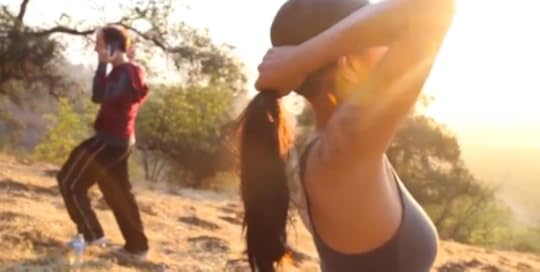
This is a shot from a video that went viral earlier this fall, urging us to all take a look at how we’re using our devices. http://ti.me/1iM0uCy
During this time, by virtue of having no alternative, I was required to be very intentional about when and how I communicated with anyone who was not within ear/eye shot. Yeah, it was a little inconvenient at times. Much to my friends’ chagrin, I didn’t have Whatsapp. To SMS on my feature phone, it took minutes(!) to type the message, because it didn’t support T9 and I had to type each letter at a time. Imagine the frustration! If you received a text message from me in the past 6 months, you should know that I exerted a lot of mental and physical effort to do so. When our internet was down at the house, I’d sometimes drive in the middle of the night to a closed cafe, where I knew the wifi would still be working. I’d sit on my motorbike on the side of the road and check my email and Facebook or FaceTime my family using an iPod (by the way, new iPods are really awesome).
Once you’ve tasted the sweet mana of technology that moves as fast as you can perceive it within reach of your pocket, could you go back to the experience of requiring to be connected based on pre-determined fixed location that crawls, at times, as slow as old honey out of the jar?
And, is that better or worse than having something near you constantly bing bonging and vibrating saying “look at me,” or moreover, the reaction that bubbles up from your ego telling you that you need to respond? I basically wanted to engage in this experiment, and prevented myself from all the above and took a long break. After many years of being incredibly connected, it’s been a privilege and a luxury to be able to have a feature phone and let things wait.
Three major lessons:
1) Boredom is a state of mind that should be inspected with care.
2) Trust that things can wait. Perhaps this is easier when you don’t have a job. But I’ll have to test this theory later.
3) Passive consumption in general is not rewarding. I didn’t have much opportunity for it, and I don’t feel like I missed much.
Now I have this device that can connect me to anyone anywhere at anytime, and I wonder, how will my behavior change, if at all? I realize that this is a silly post for many reasons; mostly I’m sensitive that it may read to some like an over-privileged wanker who bemoans having to actually type out text messages (eeegats!), and it’s like, “Can’t you just silence your phone you ding-dong?”
We live in a time where accessibility to and affordability of phones w/data is increasing at such a rate that in Indonesia, for example, you can buy phone with Facebook, Whatsapp, and a bunch of popular games for $50 on every corner (1 month salary at minimum wage = ~ $100). And social convention is such that it is the norm to have your phone present and often involved in social settings. There has been a lot written about this and even a nifty video that went viral earlier this fall. We’re all figuring it out as things change quickly and we all have our own path.
If you’ve ever wondered what it would be like to let go of that smartphone once you’ve had it, I thought I would share my thoughts. Especially in the wake of the film Her, which I thought was pretty provocative. I’m back on the other side, with an iPhone in my pocket. Wish me luck.
Posted on 2/11/2014
 Written by Katie Zacarian. You can follow Katie on Facebook here.
Written by Katie Zacarian. You can follow Katie on Facebook here.



 by
by 
The post We’re Never Bored Anymore. And That Could Be A Problem. appeared first on Dot Complicated.
Bob Costas’ Eye Ruled The Internet Last Night
Unfortunately, NBC anchor Bob Costas came down with an eye infection last night in Sochi, and is taking the night off tonight (Matt Lauer will fill in). But not before Twitter was able to capitalize on the ample entertainment provided by a case of pink eye. Here are some of the best memes tweeted:
Feel better Bob! Hoping you get some rest.
Posted on 2/11/2014



 by
by 
The post Bob Costas’ Eye Ruled The Internet Last Night appeared first on Dot Complicated.
February 10, 2014
The ‘X’ Factor For Any Successful Entrepreneur From Quick & Nimble Author
We interviewed Adam Bryant, author of Quick and Nimble, about his new book and the ‘X’ factor that makes some companies succeed while others fail.
1. For your book, you interviewed hundreds of CEOs on how to drive a culture of innovation in today’s competitive workplace. What was the most interesting insight or strategy you took away?
When people talk about innovation at companies, they often talk about process, or setting up teams in offsite locations. But the message from my interviews is that innovation starts with getting the culture right, so that everybody is pulling in the same direction, with an environment that encourages teamwork and collaboration.
Culture, to me, is the ‘X’ factor that separates good companies from bad. Two companies may have the same strategy, funding, etc., but the one with the more effective culture will win.
Stephen Sadove, the former CEO of Saks, put a particularly fine point on this idea during our interview.
“I have a very simple model to run a company,” he said. “It starts with leadership at the top, which drives a culture. Culture drives innovation and whatever else you’re trying to drive within a company. And that then drives results. When I talk to Wall Street, people really want to know your results, what are your strategies, what are the issues, what it is that you’re doing to drive your business. They’re focused on the bottom line. Never do you get people asking about the culture, about leadership, about the people in the organization. Yet, it’s the reverse, because it’s the people, the leadership, the culture, and the ideas that are ultimately driving the numbers and the results.”
2. What are key ways companies can attract and retain the best and brightest talent?
Tech CEOs, in particular, face a daunting challenge in hiring. Because talented coders and developers are in short supply, relative to demand, the CEOs have to work hard to recruit these people. But that’s only part of the battle. Once they’ve hired them, they have to create a culture and environment where these workers want to stay, because they are faced with opportunities every day to leave and go elsewhere. It’s really a remarkable shift, and it’s transforming the way companies think about culture.
To recruit people, CEOs have to be able to articulate a clear mission about the company (something beyond “change the world” that has became the standard mantra at so many firms), and then crystallize a simple plan, so that everyone at the company can understand where the company is headed, how progress is going to be measured along the way, and how everyone’s work contributes to those goals. People want to feel like they’re a part of a team, and they want to contribute. In the absence of a simple plan, silos form inside companies, with each department pursuing its own goals. And silos are what topple great companies.
There are several other important drivers of culture that are explained in my new book, but creating a simple plan is a key building block.
3. It’s common to see employees on the same team email back and forth over issues that could be handled much more quickly in person. How does over-reliance on email hurt company culture, and what can we do about it?
Email was created as a productivity tool, but I’ve come to appreciate how unproductive it can be, and how dangerous email is for culture. The reason, as one CEO explained, is that simple messages get “lost in translation” over email. People can’t read tone or nuance in emails, so a simple back and forth can be blown out of proportion.
Culture is built on the connective tissue of relationships among employees, and the problem with email is that it does nothing to build those connections, and in fact it is likely to harm what little connection is there in the first place.
I’ve interviewed a number of CEOs who have explicit policies about not arguing over email, and limiting to the use of the ‘cc’ function. They want people to talk to each other in person, or pick up the phone, or Skype. You can resolve things much quicker that way. Actually talking to people is the real productivity tool.
4. If you could choose any leader (dead or alive) you wish you could have been able to interview for this book, who would it be? What would you ask?
Winston Churchill, because he had a remarkable ability to crystallize ideas in memorable ways. I’d want to really dig in with him on his thought process to understand how he captures complex ideas in such powerful sayings.
Posted on 2/1/2014
Adam Bryant conducts interviews with chief executives for Corner Office, a feature about leadership and management in The New York Times and on NYTimes.com that he started in March 2009. It now appears twice weekly, on Friday and Sunday.
Adam has had many roles at The Times, including business reporter, deputy business editor, deputy national editor and senior editor for features. He is also a former senior writer and business editor at Newsweek magazine. Adam was the lead editor of a series on the dangers of distracted driving that won a Pulitzer Prize for National Reporting.
He is the author of two books. His most recent, Quick and Nimble; Lessons from Leading CEOs on How to Create a Culture of Innovation, was published in January 2014. His first book, The Corner Office; Indispensable and Unexpected Lessons from CEOs on How to Lead and Succeed, was a New York Times bestseller. He also teaches a course, “The Practice of Leadership,” at Columbia University.
Follow Adam on LinkedIn  and Twitter
and Twitter  .
.



 by
by 
The post The ‘X’ Factor For Any Successful Entrepreneur From Quick & Nimble Author appeared first on Dot Complicated.
February 7, 2014
Why I Haven’t Been Able To Share My Wedding Photos On Facebook
I confess. I am a card-carrying, bona fide undersharer.
Up until the point of writing this, I hadn’t yet stamped a few life events with Facebook-official status. In other words, I hadn’t posted personal photos (or details) of important things like tying the knot, honeymooning in New Zealand, and buying my first tree. A house happened to accompany this magnificent—post-worthy—live oak.
As usual, it has taken me so long to post photos of these events that other people have shared their pictures. In general, I like to soak up life experiences on my own—before getting the opinions of my 5,000 closest friends! Finally, last week, after the second person shared an image of my amazing tree on Facebook, I decided to bite the bullet. No, I didn’t post my own pictures (not just yet), but I did, at least share their photo on my page. Baby steps.
Since no one accompanied my husband and I to New Zealand, of course, debuting my honeymoon is left entirely up to me. In some ways, this is a lot of pressure. Unlike my wedding, which was highlighted online by numerous people, I can’t skate by in this way with my honeymoon—leaning on other people’s tags. My husband won’t be tagging me in any photos, because for one thing, he doesn’t even know what that means. Eric is a complete non-sharer—incognito online—which is actually something that attracted me to him in the first place. He is a very private person—like me. Striving for some privacy in our well-connected world is yet another reason why it takes me a while to share online and why I sometimes choose not to at all.
While my life, in many ways, is an open book—I have literally written three books about it—limiting what I post on Facebook gives me a sense of solitude for peace of mind as well as personal growth. As a highly sensitive person, life can be quite intense for me, and transitions (even great ones like buying a house and getting married) can be challenging. Before highlighting details online, I want to live in my home and my marriage, enjoy them, and grow. My job entails writing about life, so I eventually share many intimate details about my experiences. This usually happens in the form of a book first, in which I have spent years learning, formulating ideas, and crafting my thoughts.
Rather than posting a quick note on Facebook about a recent insight, I often choose to let that wisdom germinate for later dissemination. As an example, some new facts about my eating disorder recovery experience have recently been revealed in the tenth anniversary edition of my first book, Life Without Ed. Within the book’s afterword, I was able to write much more than I ever could have in a blog post, Facebook share, or 140-character Tweet. Some might say that my lack of providing details online is lying by omission. I do, after all, leave out certain facts about my life online—for a while. But I don’t look at it that way. With all that I share, I am authentic and real. I just don’t share everything as it happens in real-time.
Speaking of being real, I must confess that there are other reasons that I undershare, and these don’t have anything to do with privacy issues. One is perfectionism. Like I said above, being expected to post about life events can be a lot of pressure. Back to my oak tree: I have been planning to write the perfect post about the fact that it has a seventeen- foot circumference and is possibly 800 years old. Such a tree demands a stellar Facebook post to be shared at the precisely perfect time. (Maybe National Arbor Day?) And this is a classic case of perfectionism at its best—a complete standstill. Waiting to do something perfectly most often leads to a perpetual state of procrastination. In writing this blog, my new goal online is to be perfectly imperfect. Stayed tuned to learn all about the tree was so great it convinced me to buy an old home that is literally falling apart. (And that’s why I previously said that the house experience has led to personal growth!)
Something else that keeps me from sharing online is plain and simple online insecurity. What will they think of me? We sometimes hear negative things about oversharing. Randi says, in Dot Complicated, “Just because you can document your every waking moment doesn’t mean you should.” Is it possible that I don’t want to be labeled as an oversharer?
Um, well, yes. But even Randi admits that she sometimes overshares, particularly in the area of mommyhood, and she doesn’t apologize for it. Her posts about parenting have actually helped to build a community of moms who learn from one another. That said, maybe as I strive toward greater balance in my online life, there will be a bit of oversharing in my future. Here’s a place to apply that old saying, “What other people think of me is none of my business.”
Taking all of this into account, I finally resolved—over three months later—to share my personal wedding photos on Facebook. This was, in large part, a result of Randi’s encouragement about a month ago. She talks about how more interaction can lead to more connectedness, and she is right. Last night, I posted wedding photos with corresponding captions, and people responded with wonderful sentiments and even marriage wisdom. No one seemed to care that I didn’t take the time to sort through all of the wedding photos to find the perfect ones. Some people may think that I went overboard with too many pictures, but not everyone has to “like” me (or my wedding dress). At least, that’s what I am learning these days.
What about the honeymoon? These images, too, will be coming soon to a Facebook page near you.
What is your sharing philosophy? I would love to hear your lessons from online experience.
Posted on 2/7/2014
*Comment on this post to be entered into a drawing for a copy of Jenni’s book, Life Without Ed. Winner will be notified on 2/18/2014.*
Jenni Schaefer is an internationally known speaker, accomplished singer/songwriter, and bestselling author. She has appeared on shows like Today and Dr. Phil, as well as publications ranging from Cosmopolitan to The New York Times. Her books include Life Without Ed; Goodbye Ed, Hello Me; and her latest with Harvard Medical School, Almost Anorexic: Is My (or My Loved One’s) Relationship with Food a Problem? Jenni lives in Austin, Texas, where she can often be found exploring the outdoors with her newlywed husband—and sometimes sharing about it on Facebook. For more information: JenniSchaefer.com.



 by
by 
The post Why I Haven’t Been Able To Share My Wedding Photos On Facebook appeared first on Dot Complicated.
Flappy Bird: The Maddeningly Addicting Viral Game
First, it was Angry Birds; then came Candy Crush – and now, casual gamers are buzzing about Flappy Bird. Launched in May 2013, Flappy Bird didn’t become a viral hit until mid-January of 2014. Without any promotion, the app has racked up over 50 million downloads and 47,000 reviews in the App Store. The creator, Dong Nguyen, coded the app in less than three days and attributes his success to dumb luck.
In Flappy Bird, players propel and steer a bird through a series of green tubes. The goal is to accumulate the highest score possible, which is easier said than done. On your first few tries, you’ll find it maddeningly difficult to get your bird avatar to stay afloat, let alone through the first few tubes. With low-res graphics reminiscent of the early days of Nintendo’s Mario, simple gameplay, and lack of sophisticated levels or storyline, it’s surprising to see the scale of its success. Scroll down to the Customer Reviews in the app store to see all the high ratings from frustrated gamers who are helplessly addicted to this game.
Here are some helpful hints for how to get ahead in Flappy Bird:
Tips and Tricks to Improve your Score
The Flappy Bird Survival Guide
How to Improve Your Score in Flappy Bird
Flappy Bird: Top 5 Tips, Hints, and Cheats
How to Not Suck at Flappy Bird
Have you played it? Why do you think it’s so addicting?



 by
by 
The post Flappy Bird: The Maddeningly Addicting Viral Game appeared first on Dot Complicated.


